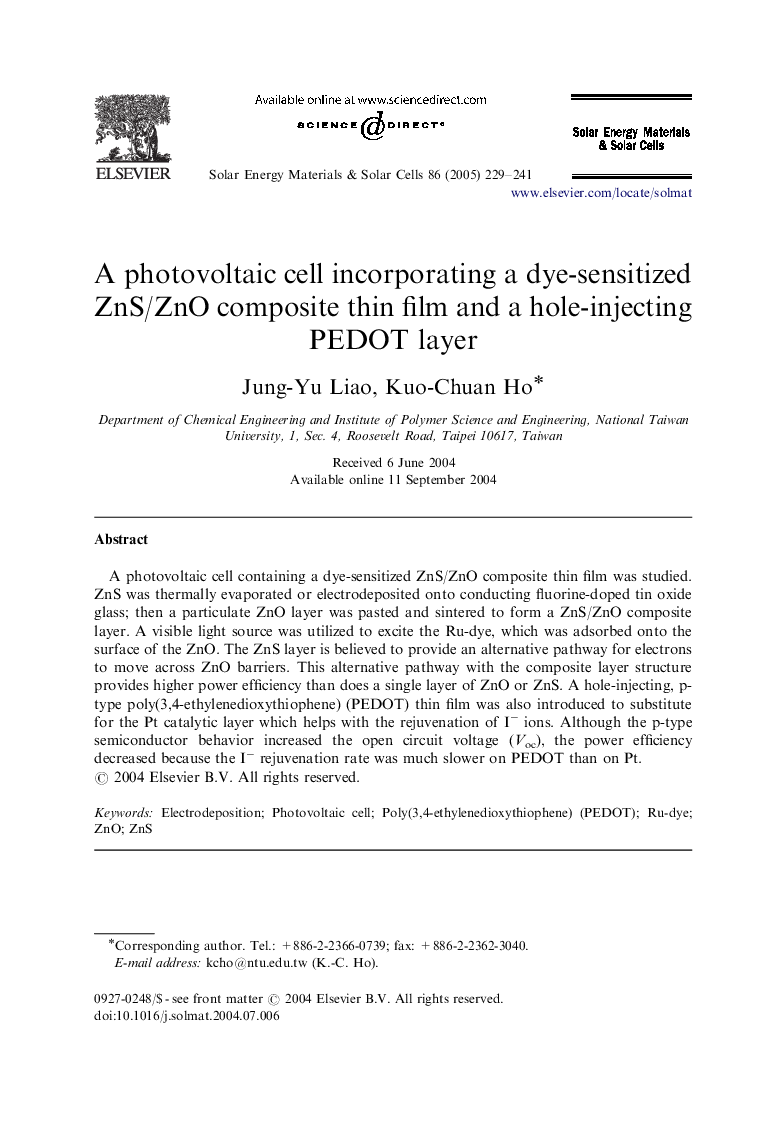| Article ID | Journal | Published Year | Pages | File Type |
|---|---|---|---|---|
| 10249281 | Solar Energy Materials and Solar Cells | 2005 | 13 Pages |
Abstract
A photovoltaic cell containing a dye-sensitized ZnS/ZnO composite thin film was studied. ZnS was thermally evaporated or electrodeposited onto conducting fluorine-doped tin oxide glass; then a particulate ZnO layer was pasted and sintered to form a ZnS/ZnO composite layer. A visible light source was utilized to excite the Ru-dye, which was adsorbed onto the surface of the ZnO. The ZnS layer is believed to provide an alternative pathway for electrons to move across ZnO barriers. This alternative pathway with the composite layer structure provides higher power efficiency than does a single layer of ZnO or ZnS. A hole-injecting, p-type poly(3,4-ethylenedioxythiophene) (PEDOT) thin film was also introduced to substitute for the Pt catalytic layer which helps with the rejuvenation of Iâ ions. Although the p-type semiconductor behavior increased the open circuit voltage (Voc), the power efficiency decreased because the Iâ rejuvenation rate was much slower on PEDOT than on Pt.
Related Topics
Physical Sciences and Engineering
Chemical Engineering
Catalysis
Authors
Jung-Yu Liao, Kuo-Chuan Ho,
